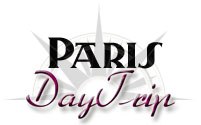Paris Day
Trips : Versailles
Palace
The Chateau
Visitors to the Chateau have a choice if
itineraries, and whether to be guided or not. Apart from the state
apartments of the king and queen and the Hall of mirrors, where the
Treaty of Versailles was signed to end World War I, most of the palace
can only be viewed by guided tour. Note that you won’t be able to see
the whole palace in one day, because tours of some of the
apartments run concurrently.
There are four entrances : Entrance A is  for those who want to visit the Grands
Apartments only. Entrance B is for
pre-booked groups. Entrance C gives access to Louis XIV apartments, the
Dauphin and dauphine’s apartments and the hall of Mirrors
and Entrance
D organizes various guided tours for individual visitors at varying
prices. Places can be booked for guided tours on the same day, but it’s
wise to arrive early. Information on which tours will be running is
available by ringing the day before.
for those who want to visit the Grands
Apartments only. Entrance B is for
pre-booked groups. Entrance C gives access to Louis XIV apartments, the
Dauphin and dauphine’s apartments and the hall of Mirrors
and Entrance
D organizes various guided tours for individual visitors at varying
prices. Places can be booked for guided tours on the same day, but it’s
wise to arrive early. Information on which tours will be running is
available by ringing the day before.
The construction of the Château began in 1664
and lasted virtually until Louis XIV’s death in 1715. It was
never meant to be a home. Regarded as a second only to God, and the
head of an immensely powerful state, Louis XIV was an
institution
rather than a private individual. His risings and sittings, comings and
goings, were minutely regulated and rigidly encased in ceremony.
Attendance at these rituals was an honour much sought after by
courtiers. Versailles was the headquarters of every arm of the state.
More than 20.000 people lived in the palace in a state of unhygienic
squalor, according to contemporary accounts.
Following Louis XIV’s death, the château was
abandoned for a few years before being reoccupied by Louis XV in 1722.
It remained the residence of the royal family until the revolution of
1789, when the furniture was sold and the pictures dispatched to the
Louvre. Thereafter, it fell into ruin and was nearly demolished, until
1837 when Louis-Philippe donated funds to turn it into a museum to the
glory of France. In 1871, during the paris Commune, it became the seat
of the nationalist government, and the French parliament continued to
meet in louis XV’s opera building until 1879. Restoration only began in
earnest between the two world wars.
The Park
The park surrounding the chateau covers four square
kilometres. The grounds near the palace are made up of symetrical
formal gardens, which ornate fountains and sculptures. The fountains
only gush on selected days, (april to mid-oct and sat- July-september),
bringing the gardens to life. The rest of the time, the statues on the
empty pools loor rather bereft of purpose.
The park scenery becomes less formal the further you
go from the palace and makes a pleasant setting for two lesser outcrops
of royal mania : The italianate Grand Trianon, designed by
Hardouin-Mansart in 1867v as a “country retreat” for Louis XIV, and the
modest Greek Petit Trianon, built by Gabriel in the 1760s for Mme de
Pompadour, Louis XV’s mistress.
More charming and rustic than either of these,
however, is le Hameau de Marie-Antoinette, a play–village and farm
built in 1783 for Louis XVI’s queen to indulge the fashionable Rousseau
inspired fantasy of returning to nature.
Distances in the park are considerable. If you can’t manage them on
foot, a petit train shuttles between the terrace in front of the
château and the Trianons horse-drawn calashes also cover the same
journey. There are bikes for rent at the Grille de la Reine, Porte
St-Antoine and by the grande Canal, and boats for rent on the grande
canal, within the park.









 for those who want to visit the Grands
Apartments only. Entrance B is for
pre-booked groups. Entrance C gives access to Louis XIV apartments, the
Dauphin and dauphine’s apartments and the hall of Mirrors
and Entrance
D organizes various guided tours for individual visitors at varying
prices. Places can be booked for guided tours on the same day, but it’s
wise to arrive early. Information on which tours will be running is
available by ringing the day before.
for those who want to visit the Grands
Apartments only. Entrance B is for
pre-booked groups. Entrance C gives access to Louis XIV apartments, the
Dauphin and dauphine’s apartments and the hall of Mirrors
and Entrance
D organizes various guided tours for individual visitors at varying
prices. Places can be booked for guided tours on the same day, but it’s
wise to arrive early. Information on which tours will be running is
available by ringing the day before. 






